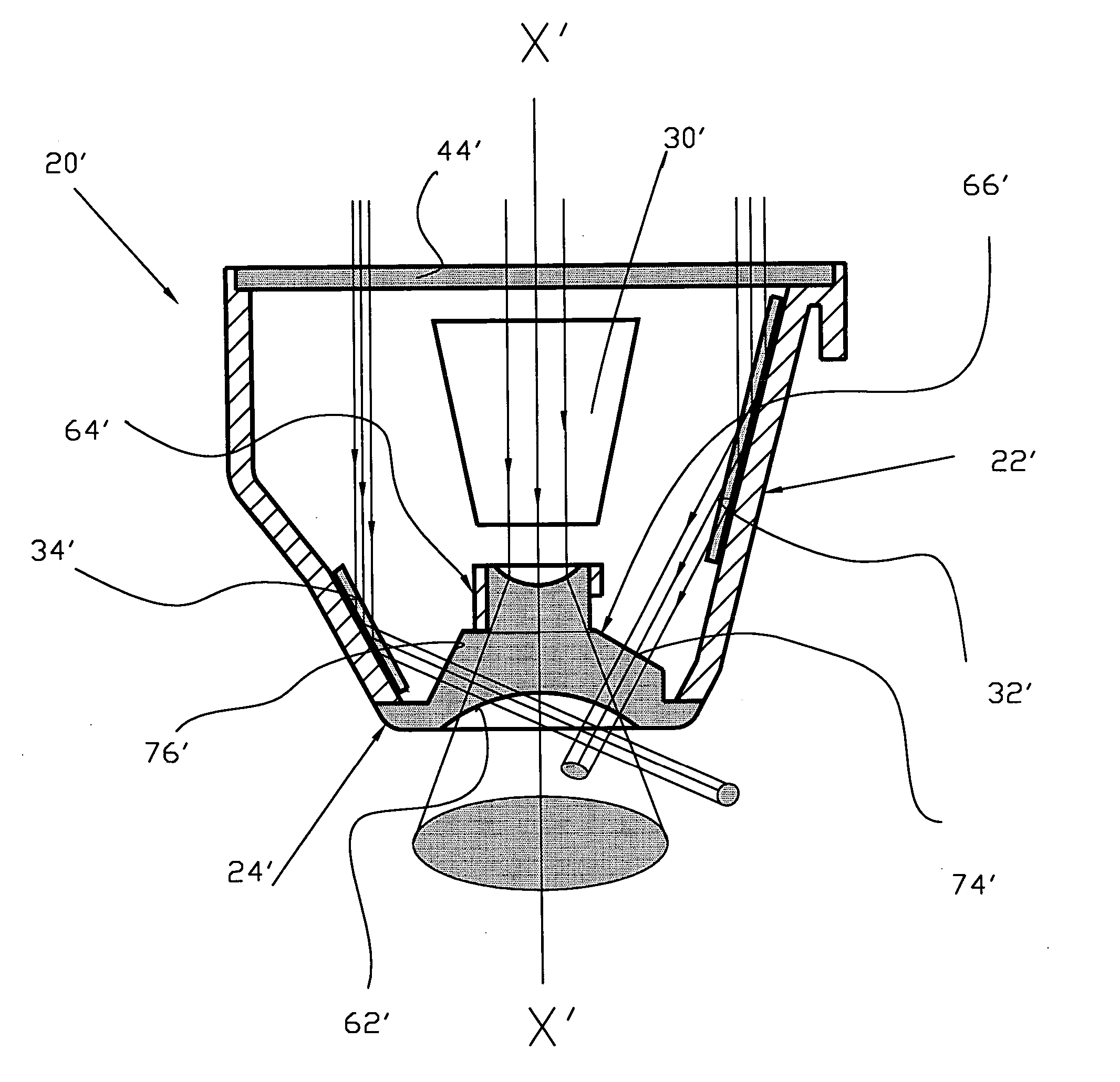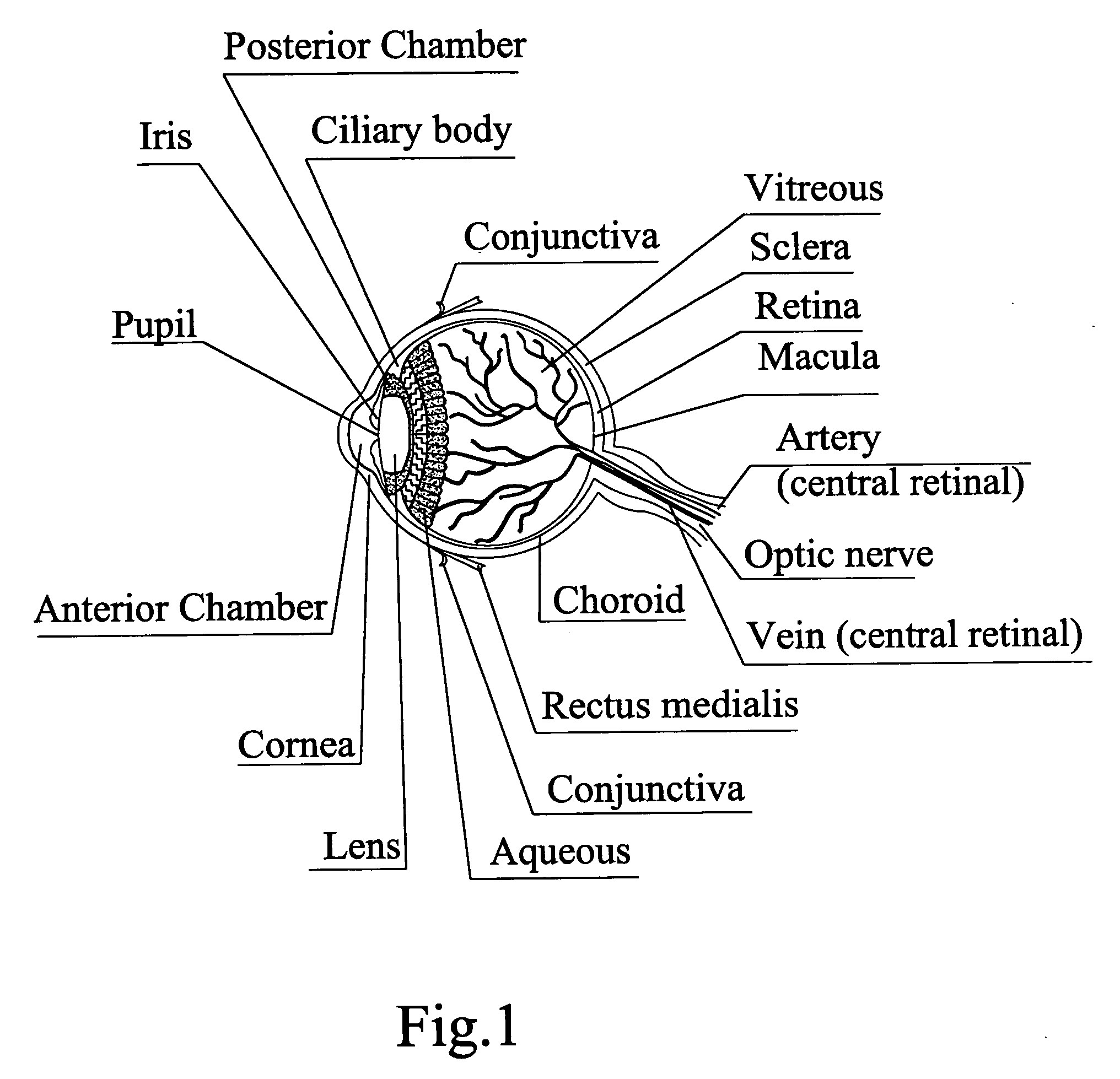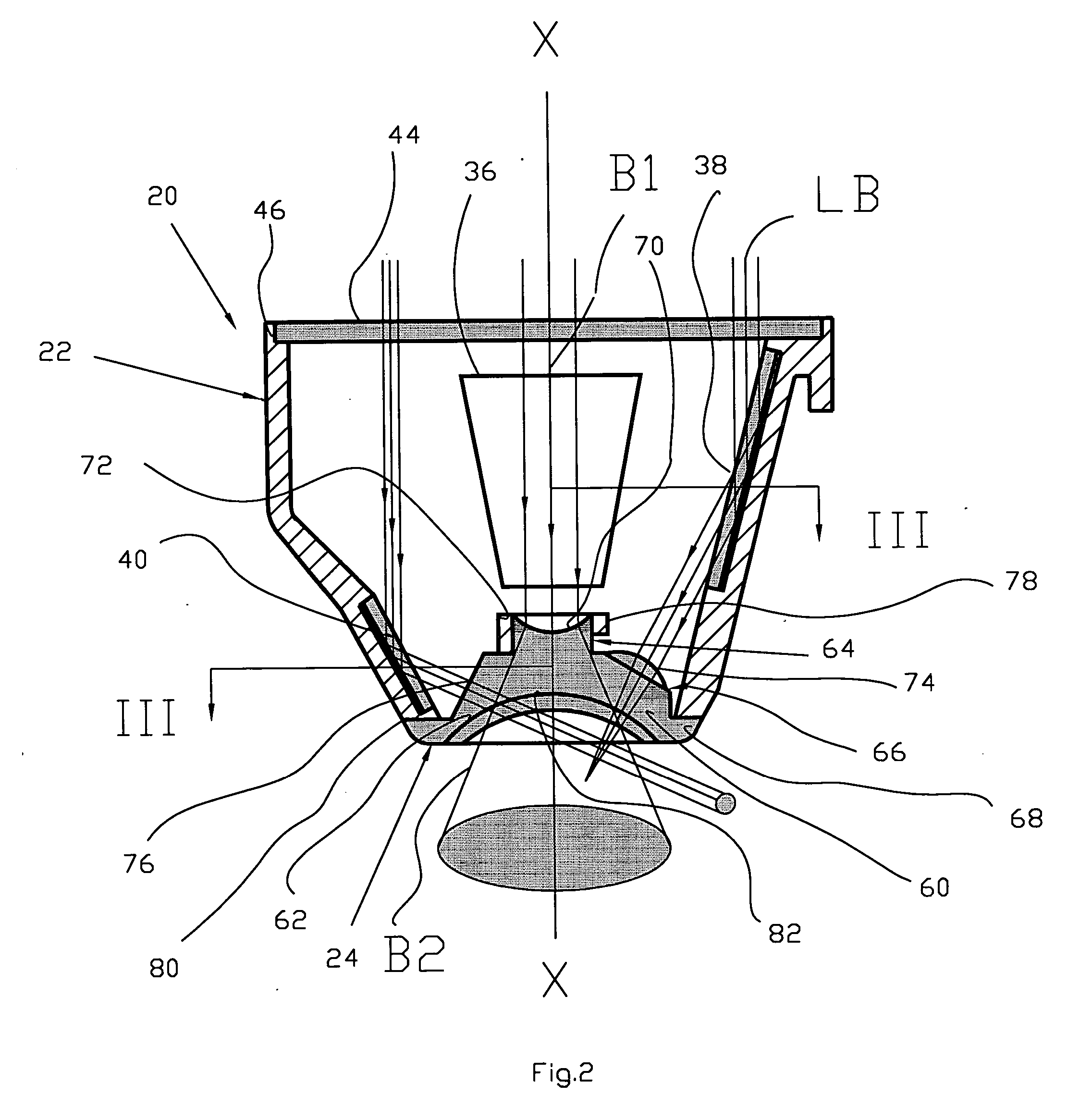Universal gonioscope-contact lens system for intraocular laser surgery
a contact lens system and intraocular laser technology, applied in the field of indirect ophthalmology optical devices, can solve the problems of reducing the clinical value of laser surgery, affecting the treatment effect, and unable to properly classify glaucoma, so as to achieve efficient laser delivery, reduce the cost of laser treatment, and simplify the optical system
- Summary
- Abstract
- Description
- Claims
- Application Information
AI Technical Summary
Benefits of technology
Problems solved by technology
Method used
Image
Examples
Embodiment Construction
[0063] As shown in FIG. 2, which is a longitudinal cross-sectional view of the universal gonioscope—contact lens system (hereinafter referred to as “gonioscope-lens system) made in accordance with one embodiment of the invention, the system 20 consists mainly of two major elements, i.e., a hollow tapered body 22 with mirror surfaces (which are described later) formed on the inner side of the gonioscope body 22 and a contact lens 24 of a specific shape which is applied onto the eye cornea (not shown). In the embodiment of FIG. 2, the contact lens 24 is made as a part separate from the gonioscope body 22 and used as an optical element of the system 20 and as a support for the freely interchangeable different gonioscope bodies such as the body 22 that can be used for different purposes, e.g., for observation, for laser surgery, for changing optical angles of the system, etc. The aforementioned main optical elements of the system 20, i.e., the gonioscope body 22 and the contact lens 24,...
PUM
 Login to View More
Login to View More Abstract
Description
Claims
Application Information
 Login to View More
Login to View More - R&D
- Intellectual Property
- Life Sciences
- Materials
- Tech Scout
- Unparalleled Data Quality
- Higher Quality Content
- 60% Fewer Hallucinations
Browse by: Latest US Patents, China's latest patents, Technical Efficacy Thesaurus, Application Domain, Technology Topic, Popular Technical Reports.
© 2025 PatSnap. All rights reserved.Legal|Privacy policy|Modern Slavery Act Transparency Statement|Sitemap|About US| Contact US: help@patsnap.com



